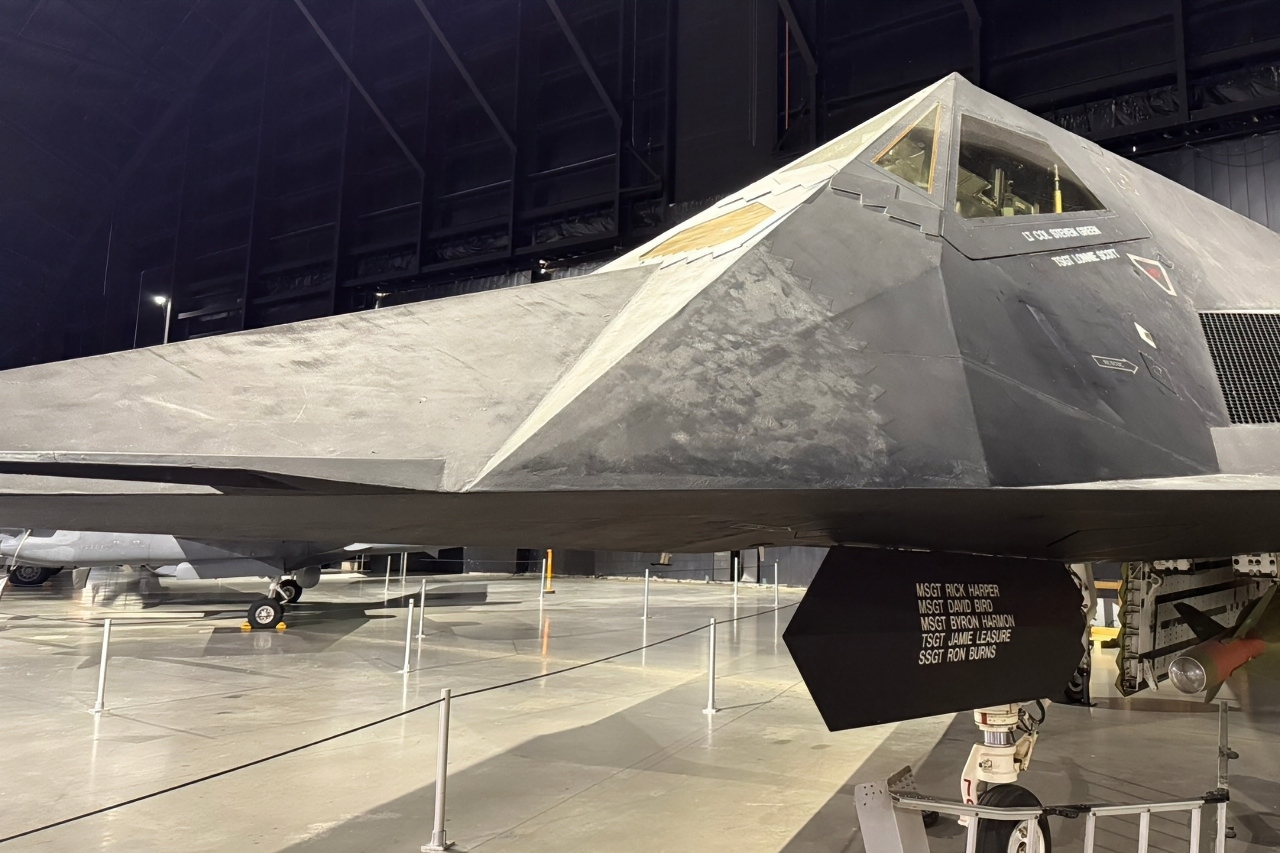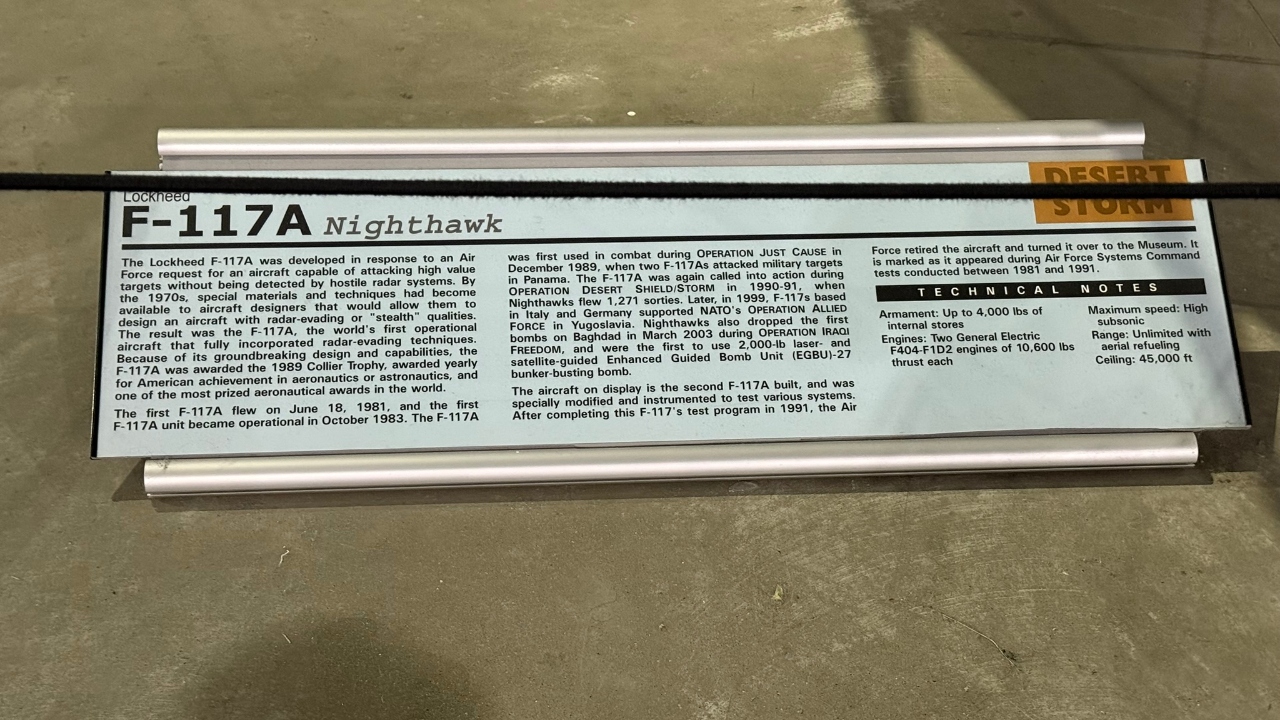PUBLISHED on August 6, 2025, 1:52 PM EST – Key Points and Summary – The F-117A Nighthawk, the world’s first operational stealth aircraft, was officially retired in 2008 but is now living a second life.
-The U.S. Air Force is keeping the iconic jet airworthy for several key missions. Primarily, it serves as a unique “aggressor” aircraft, providing realistic combat training for American pilots against the increasing number of foreign stealth threats.
-It also functions as a cost-effective testbed for new technologies and as a stand-in for other platforms like cruise missiles. A contract is in place to keep a portion of the fleet flying until the mid-2030s.
The F-117A Stealth Fighter Comeback?
DARPA and Lockheed’s Skunk Works division put their heads together to build the world’s first operational stealth aircraft.
The idea of the F-117A Nighthawk, that odd-looking yet stealthy aircraft, originated during the 1970s, when the United States came to realize that American air supremacy was being challenged in a way not seen since the days of World War II—increasingly powerful air defense systems in the Soviet Union, particularly surface-to-air SAM sites, and ground-based radar. If the Cold War ever became hot, the Pentagon worried, American fighters and bombers could be shot out of the sky with impunity. The implications for America’s national security were grave.
It was the jeopardization of American air power that prompted the Defense Research Projects Agency, more (in)famously known by its acronym DARPA, to partner with the other secretive but renowned Skunk Works division, then a part of Lockheed. Together, those defense project heavyweights built Have Blue, a technology demonstrator that was broadly similar to what would ultimately become the F-117A.
Two single-engine Have Blues were built. They were small, about 40 percent the size of what the Nighthawk would be. But despite their ungainly appearances—Kelly Johnson, the Skunk Works’ first manager and a significant contributor to the SR-71, the U-2 spy plane, and many other revolutionary designs, famously said it would never fly—Have Blues proved Lockheed and DARPA were not just chasing smoke.
The United States had already made significant progress in developing stealth technology via the A-12 Oxcart, a spy plane built for the CIA, and the similarly designed SR-71 Blackbird. It was that enormous aircraft that laid the groundwork for both stealth and Lockheed, which “first developed aircraft shaping methods, radar absorbing structural edges, radar absorbing coatings, and other design features that greatly reduced the SR-71’s radar signature.”

F-117 As Close As We Can Get. National Security Journal Original Photo.
The groundwork for stealth had been laid. But the SR-71 was an enormous, finicky beast in the best of circumstances. And it didn’t carry any weapons. Integrating that technology onto a smaller platform—and one that could carry more than cameras—would be key to the Nighthawk’s success.
In contrast to today’s trillion-dollar aerospace projects, the Nighthawk was built in a scant seven years, entering service in 1983, just in time for the Gulf War.
But despite that jet’s Cold War pedigree, it still flies today — though not in combat anymore, but as an aggressor aircraft, used to train pilots and familiarize them with air combat against stealthy aircraft.
A Second Life for the Nighthawk
Though the F-117A Nighthawk was retired in 2008, it still has around 10 years of service left before all remaining F-117As presumably make their last stop at a U.S. Air Force boneyard. Until that happens, however, the jets are still useful for realistic combat training, research and development into stealth, and as a stand-in for other platforms, like stealthy missiles.
The U.S. Air Force’s mission to keep its Cold War F-117A flight-worthy began several years ago, when the Air Force Test Center issued a Request for Information, soliciting ideas to keep that jet airworthy. That Request for Information — which is still online — stated that project ideas and bids should “determine potential suppliers with experience and capabilities to support a 10-year F-117A Maintenance and Logistics Support Services contract at the Tonopah Test Range (TTR),” specifying that work should begin on the first of January, 2024.

F-117A Nighthawk Sign Image Taken at USAF Museum. Image Credit: National Security Journal.
That Request for Information concerning the Nighthawks broke down the requirements that each bid should include, explaining that “potential contractors should have outlined in their bid three main technical objectives: maintenance and logistics support for F-117A limited flying operations at the Tonopah Test Range (TTR) airfield, the preservation of the F-117A aircraft fleet in an extended storage condition, and the demilitarization/declassification of F-117A aircraft determined to be excess to Department of Defense requirements.” It also explained that “anticipated demilitarization/declassification rate expected is a maximum of 2-3 aircraft per year.”
The F-117A production line has been closed for a long time, so keeping the jets in the air would require knowledge of their service and maintenance schedules, as well as an ample supply of consumable spare parts that periodically need servicing or replacement.
At its peak, the F-117A fleet was relatively small: just 59 of the jets were built, in addition to five YF-117A test aircraft built before the F-117A. The fleet is smaller, though now, thanks to a couple of combat losses.
It is possible that some of the existing F-117As are kept airworthy, but not operational, to cannibalize for parts to service the other Nighthawks.
What Happens Now for the F-117A?
Given the increasing proliferation of stealthy aircraft, with multiple efforts underway to field both fifth- and sixth-generation aircraft in Europe and Asia, the Nighthawk’s utility is, in an ironic twist, increasing.
Providing both pilots-to-be and seasoned pilots of fifth-generation aircraft with a combat training opportunity in an aged yet still stealthy airplane is a unique opportunity. Although the plane’s heyday was during the Cold War, its most important years of service may lie ahead.
About the Author: Caleb Larson
Caleb Larson is an American multiformat journalist based in Berlin, Germany. His work covers the intersection of conflict and society, focusing on American foreign policy and European security. He has reported from Germany, Russia, and the United States. Most recently, he covered the war in Ukraine, reporting extensively on the war’s shifting battle lines from Donbas and writing on the war’s civilian and humanitarian toll. Previously, he worked as a Defense Reporter for POLITICO Europe. You can follow his latest work on X.
More Military
Today Marks 80 Years Since Hiroshima











Sumadinac
August 7, 2025 at 7:05 am
Send him to Serbia again😂😂😂😂😂😂😂🇷🇸🇷🇸🇷🇸🇷🇸🇷🇸🇷🇸